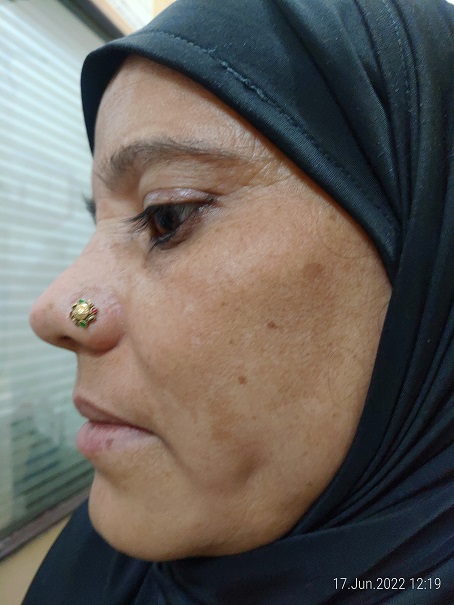Melasma
Melasma is a common skin condition characterized by dark, irregular patches on the face, particularly on the cheeks, forehead, and upper lip. It predominantly affects women, often during pregnancy or when using hormonal birth control methods. While the exact cause of melasma isn’t fully understood, it is believed to be influenced by hormonal changes, sun exposure, and genetics.


Treatment typically involves a combination of approaches:
Sun Protection: Wearing broad-spectrum sunscreen with SPF 30 or higher is crucial to prevent further pigmentation. Hats and sunglasses can also shield the face from harmful UV rays.
Topical Agents: Dermatologists may prescribe topical creams containing ingredients like hydroquinone, retinoids, or corticosteroids to lighten the dark patches.
Chemical Peels: Chemical peels, using acids like glycolic or trichloroacetic acid, can exfoliate and improve pigmentation.
Laser Therapy: Intense pulsed light (IPL) and laser treatments target melanin in melasma patches, reducing their appearance.
Hormonal Therapy: For some cases related to hormonal fluctuations, oral contraceptives or hormone replacement therapy may be considered.
Skin Care Routine: A customized skincare routine can maintain results and minimize recurrence.
Consulting a dermatologist is essential for a tailored treatment plan, as melasma varies in severity and causes. Patience and consistent adherence to recommended treatments are key to successfully managing melasma.
Cases


